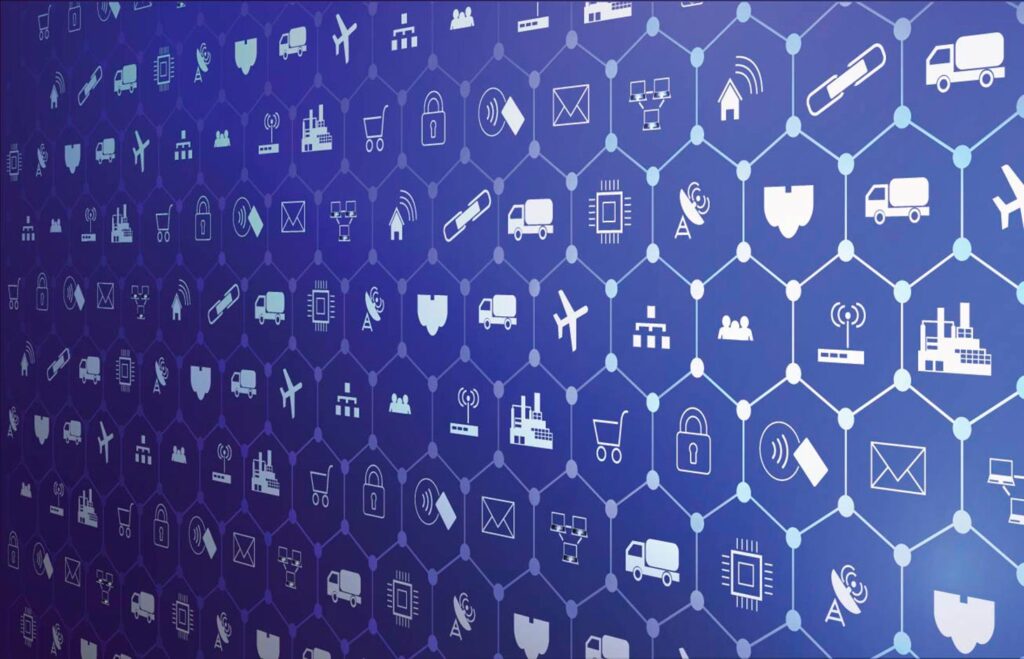2008’s Batman film The Dark Knight is still remembered more than a decade later for its many contributions to the superhero genre. The film’s actors have been lauded for their performances, most notably the late Heath Ledger. The high-tech weaponry featured in the film has also raised the bar for what we have come to expect from action movies.
While much of the technology featured in the film seems to belong in the realm of science fiction, some of it has already come to fruition. Among the innovations that have been brought to life is some technology based on the Internet of Things (IoT).
In The Dark Knight, Batman commissions Lucius Fox to create a technology that allows him to see the world via a network of citizen’s phones. It’s a tactic that allows him to locate the bad guy; however, it raises concerns about people’s right to privacy. Ultimately, the project is shut down at the end of the film.
Today, the world is grappling with the very same privacy issue around IoT technology. The IoT is a system of interrelated computing devices, mechanical and digital machines, objects, animals, and people. IoT networks have the ability to transfer data without human-to-human or human-to-computer interaction. As a result, our world is more connected than ever before.
The IoT has infiltrated homes all around the country in the form of smart thermostats, smart speakers, and more. There are also a number of innovative IoT applications doing more than just making people’s lives easier or helping them play their favorite songs.
Eventually, humanity will have to deal with the issues associated with our increasingly connected society. In the meantime, IoT applications are helping reduce counterfeiting, solve crimes, and save lives. Here are seven innovative IoT applications spanning the gamut of human experience, from work to play.
1. Batman-like technology helping cops fight crime
ShotSpotter uses an advanced system of sensors, algorithms, and artificial intelligence to address gun violence across the country. Using software to analyze audio signals and pulse features from potential gunshots, the application can determine the location of sounds picked up by sensors and determine whether or not they are gunfire. The system then sends alert notifications to law enforcement and emergency responders.
This IoT application is producing results in several cities. In Oakland, CA, ShotSpotter claims to have contributed to a 29% overall reduction in gunfire incidents per day from 2012-2017. In Sacramento, the technology has apparently detected 1,905 gunfire incidents, resulting in 142 arrests and 132 recovered guns. Rochester, NY, is said to have seen a 40% reduction in gunshot incidents.
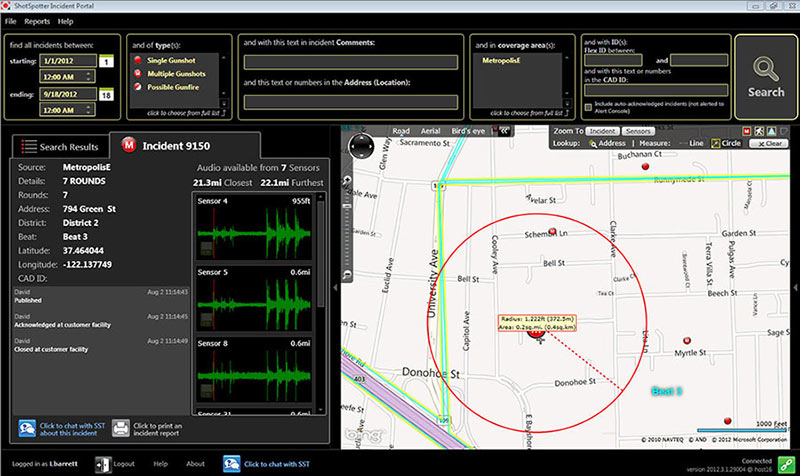
2. Giving pregnant women peace of mind
Despite medical advancements in recent years, there’s still much doctors don’t know about pregnancy. Preterm birth remains the number one killer of children under the age of five, and stillbirth claims ten times more babies than Sudden Infant Death Syndrome. Medical professionals and pregnant women need more information to prevent these complications.
That’s where Bloomlife comes in. The business’s smart pregnancy tracker and contraction monitoring app can provide the medical community with a better understanding of the signs and symptoms associated with pregnancy complications.
The IoT application automatically tracks and records contraction frequency, duration, and patterns. This information is relayed to users in real-time, giving them a picture of their body’s natural rhythms so they can better detect changes.
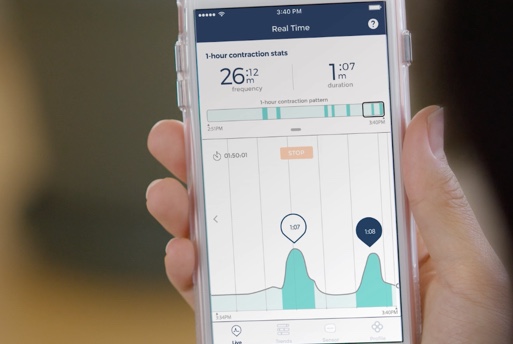
3. Curbing opioid misuse
According to the U.S. Department of Health and Human Services, 11.4 million people misused opioid drugs in 2016. As a result, 42,000 people died from opioid overdoses that year.
Smart pill bottles are helping address the opioid epidemic. By giving health care providers the information they need, they can identify high-risk patients and intervene in real-time. Pilleve’s pill bottle tracks patient behavior to make sure the prescriptions are taken correctly. When patients are in pain, they can access their pills via the Pilleve app, which verifies their identity. Data on when pills are dispensed is transmitted to healthcare professionals for monitoring.
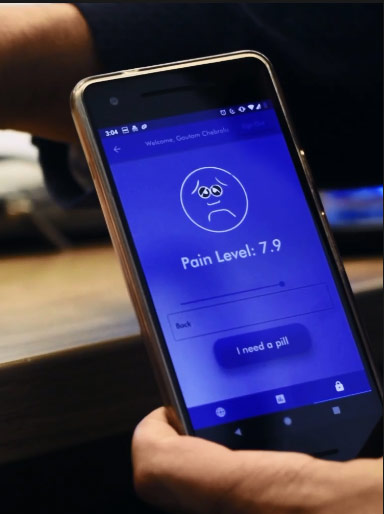
4. The ‘fake or not’ fraud fighter
Counterfeit goods have become a major problem. The global fake goods market is worth over $450 billion. In Europe, clothing, footwear, and accessories industries lose an estimated $27.7 billion annually as a result of counterfeit goods.
Authentic or Not is a new IoT application helping to address this issue. The technology uses microchips in apparel to verify authenticity. To verify clothing, consumers only have to hover their smartphones over the merchandise. The microchips also help retailers track inventory. If merchandise is stolen, businesses can deactivate the microchips to help prevent them from being sold on the black market.

5. Simplifying robotic maintenance
According to a report by the International Federation of Robotics, the number of industrial robots deployed worldwide will reach an estimated 2.6 million units this year. ABB Robotics is one of the world’s leading suppliers of industrial robots. The business has installed more than 400,000 units around the world, and now they’re working to ensure those robots outlive their human counterparts.
ABB’s connected sensors can monitor a robot’s maintenance needs so the robot can tell its owners when it requires attention. These sensors can be attached to the motors of any industrial equipment, and the data they collect helps businesses optimize performance and predict maintenance needs.
This IoT innovation can also help businesses limit unplanned stoppages, increase employee safety and productivity, and reduce emissions and environmental impact.
6. Long-distance intimacy games
Around the globe, there are 14 million couples in long-distance relationships. However, nearly half of these relationships ultimately come to an end. According to a recent survey by interactive toy company Kiirroo, that’s because long-distance relationships often lack physical intimacy.
Sex toy businesses like Kiiroo are helping couples overcome the distance barrier with innovative products. For example, Lovense offers a line of his and hers Bluetooth-enabled toys. When used by long-distance couples, the toys can simulate sex with real-time, simultaneous vibrations.
7. Making Pedestrians Safer
According to the Centers for Disease Control and Prevention, 5,987 pedestrians were killed in traffic crashes in the United States in 2016. Crosswalks have been utilized for thousands of years to make pedestrians safe, yet more than 100,000 pedestrians are injured every year.
To increase pedestrian safety, London-based firm Umbrellium helped design smart crosswalks. This IoT application uses AI, cameras, and computer-controlled LEDs to alter the patterns, layout, and configuration of pedestrian crossings.
The Starling Crossing can distinguish between pedestrians, cyclists, and vehicles, and determine the exact location, trajectory, and velocity of each road user to predict where they may move next. For example, if a child runs into the road, the innovation can alter the crossing to make the child’s trajectory clear to any nearby drivers or cyclists.
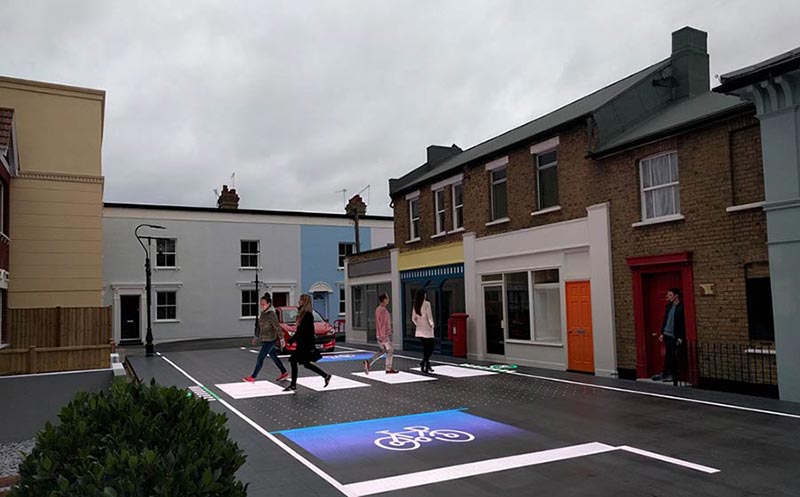
Agile monetization of IoT
These applications represent just a few of the offerings on the IoT market. According to a recent report by market intelligence firm International Data Corporation, the IoT market is expected to reach $1.2 trillion in 2022. Another report by telecommunications company Ericsson predicts that by 2022, there will be approximately 18 billion connected IoT devices in the world.
The business potential of the expected IoT growth explosion is huge. Monetization opportunities around the IoT and usage-based pricing, or consumption-based pricing, is a growing trend. This method of billing customers on their usage or even in a hybrid (e.g. usage and one-time fee) model can accelerate monetization and go-to-market opportunities.
The flexibility that comes with agile monetization capabilities for IoT billing also benefits end-users, who get easy access due to lower price points.
There’s no telling where IoT innovation will lead us next. Recently, buzz has been increasing about a new innovation called smart dust—a system of tiny microelectromechanical systems (MEMS) such as sensors, robots, or other devices. Smart dust can be used to detect things like light, temperature, vibration, magnetism, or chemicals.
The applications for this technology are endless. One day, smart dust could be used in health diagnostics, monitoring health conditions or discovering diseases like cancer sooner than our current technology allows.
Smart dust is just one of the futuristic IoT innovations on the horizon. It’s likely that over the next decade, hundreds of new applications will emerge to change the way we live, work, and play.
Quick FAQs about IoT Applications
Q: What is IoT (Internet of Things)?
The Internet of Things, or IoT, is a system of interrelated computing devices, mechanical and digital machines, objects, animals, and people. It’s characterized by its ability to transfer data without human-to-human or human-to-computer interaction.
Q: How does IoT technology feature in Batman’s “The Dark Knight”?
In The Dark Knight, Batman commissions a technology that allows him to see the world via a network of citizen’s phones, an idea rooted in the concept of the Internet of Things. It raises concerns about privacy rights, much like the real-world IoT technology does today.
Q: What are some innovative IoT applications mentioned in the blog post?
The blog post mentions several innovative IoT applications, including ShotSpotter which tackles gun violence, Bloomlife’s smart pregnancy tracker for monitoring contractions, Pilleve’s smart pill bottles for addressing the opioid epidemic, Authentic or Not for verifying the authenticity of goods, ABB Robotics’ connected sensors for industrial robots, sex toys like Lovense for maintaining intimacy in long-distance relationships, and smart crosswalks for pedestrian safety.
Q: How does ShotSpotter work and what results has it produced?
ShotSpotter uses an advanced system of sensors, algorithms, and artificial intelligence to address gun violence. It analyzes audio signals and pulse features from potential gunshots, pinpoints the location of sounds, and determines whether they are gunfire. It has contributed to a significant reduction in gunfire incidents in several cities.
Q: What is Bloomlife and how does it help with pregnancy?
Bloomlife is a smart pregnancy tracker and contraction monitoring app. It tracks and records contraction frequency, duration, and patterns, providing real-time information to users. This can help medical professionals understand the signs and symptoms associated with pregnancy complications.
Q: How are IoT applications addressing the opioid epidemic?
IoT applications like Pilleve’s smart pill bottles are helping address the opioid epidemic. These bottles track patient medication behavior, providing healthcare professionals with important data to identify high-risk patients and intervene in real-time.
Q: What is the role of IoT in combating counterfeit goods?
Authentic or Not is an IoT application that uses microchips in apparel to verify its authenticity. This technology also helps retailers track inventory and prevent stolen merchandise from being sold on the black market.
Q: How is IoT contributing to the industrial robotics industry?
ABB Robotics uses IoT with connected sensors that monitor a robot’s maintenance needs. The data collected from these sensors helps businesses optimize performance, predict maintenance needs, and increase safety and productivity.
Q: What is the impact of IoT on long-distance relationships?
IoT-based products, like Bluetooth-enabled toys offered by Kiiroo and Lovense, help long-distance couples maintain physical intimacy by simulating real-time, simultaneous vibrations.
Q: How is IoT enhancing pedestrian safety?
IoT applications like smart crosswalks, designed by London-based firm Umbrellium, use AI, cameras, and computer-controlled LEDs to alter the patterns, layout, and configuration of pedestrian crossings, enhancing pedestrian safety.
Q: What is the expected growth of the IoT market?
The IoT market is expected to reach $1.2 trillion in 2022, with approximately 18 billion connected IoT devices worldwide. This growth presents huge business monetization opportunities.
Q: What is smart dust and how does it relate to IoT?
Smart dust refers to a system of tiny microelectromechanical systems (MEMS) such as sensors, robots, or other devices that can detect things like light, temperature, vibration, magnetism, or chemicals. It’s one of the futuristic IoT innovations on the horizon with potential applications in health diagnostics, monitoring health conditions or discovering diseases like cancer sooner.
Q: How is IoT changing the way we live, work, and play?
IoT is revolutionizing various aspects of life, from making homes smarter to improving industrial efficiency, enhancing healthcare, addressing social issues, and even influencing intimate relationships. As the technology matures, hundreds of new applications are expected to emerge, further changing the way we live, work, and play.
